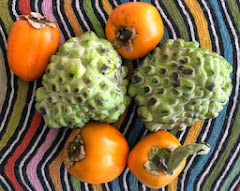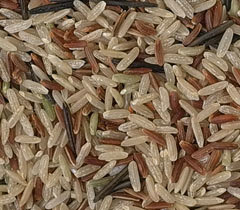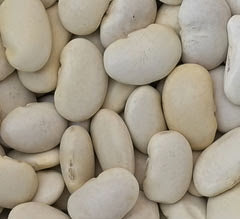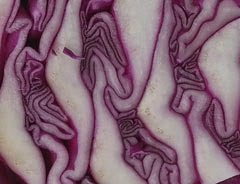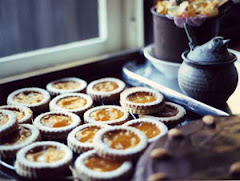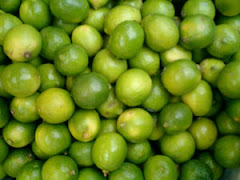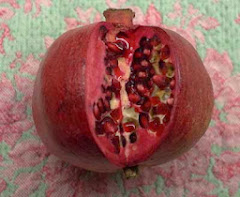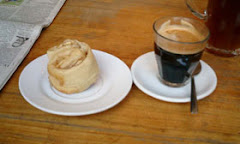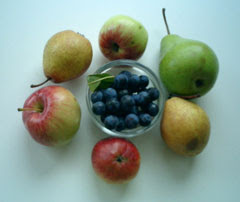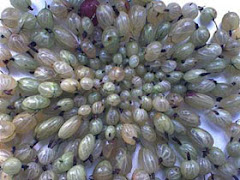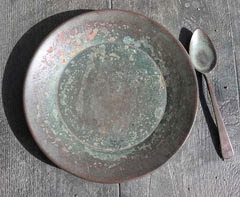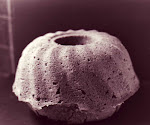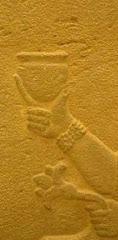Saturday, October 18, 2014
Potato salad
Here are two varieties, one with mayonnaise/ yogurt and the other one with stock:
With mayonnaise &/or yogurt:
GET
1 kg firm potatoes (Bamberger Hoernle potatoes)
200–250 g eggless mayonnaise or
yogurt/mayonnaise mixture
8 pickled gherkins (cornichons)
2 sour apples
1 tsp hot mustard
Some Dorrigo pepper (white pepper)
2 -3 eggs boiled for decoration (optional)
all organic
DO
Steam the spuds and peel after they have cooled down.
Mix mayonnaise and/ or yogurt, add mustard and pepper. Cut gherkins into small cubes add and mix in. Then add the finely sliced potatoes, taking care that they do not stick together. Peel and cube apples and mix under. Let it rest for more than 30 minutes. Peel the boiled eggs, decorate salad with egg halves and serve.
With stock, vinegar and oil:
GET
1 kg firm potatoes
1/4 l vegetable stock
1 onion
8 pickled gherkins (cornichons)
3 Tbsp. Mirin or vinegar
olive oil
Some Dorrigo pepper (white pepper)
chives
parsley
all organic
DO
Steam the spuds and peel after they have cooled down.
Chop onion finely, fry in oil till translucent, set aside. Add hot stock, vinegar, pepper and some oil. Peel the potatoes, cut into cubes and drop into the (still warm) dressing. Cut the gherkins into fine slices and add. Let it rest for more than 10 minutes. Decorate with some gherkins, cut chives and parsley.
Potato salad should always be prepared fresh and be served at room temperature. One day in the fridge is also possible.
The Bamberg potato cannot be harvested by fossil fuel powered machines, hence it is an endangered vegetable.
Bunya Potato Salad
Images:
Vincent van Gogh, Still Life: Potatoes in a Yellow Dish, 1888
Max Liebermann, Potato Harvest, 1875
Sunday, September 21, 2014
Globalised Food Monoculture and the Colonial Legacy in the Pacific islands
Micronesian and Polynesian people settled early on the islands in the Pacific Ocean. Both in Nauru (Pleasant Island) and the Cook Islands they practised aquaculture and grew coconuts and pandanus fruit. A self-sufficient way of life in the Pacific flourished and inspired Western dreaming and art in the 19th and 20th centuries.
Successions of colonists made an uninhabitable quarry out of Nauru, ruined arable land and 'educated' the indigenous population to like imported foods. In this denuded land islanders became dependent on the boats arriving for sustenance. Colonial rule and Christian missionaries made Western style food appear palatable. Out of independence came dependence and a long time health legacy.
"Anthropologists Dr Amy McLennan and Professor Stanley Ulijaszek found that islanders lost many of their traditional food cultivation, preparation and preserving skills after settlers insisted that they learn western ways of eating." (source)
"Dr Amy McLennan said: 'Under colonial rule, much changed in how food was sourced, grown and prepared and the social change was swift. What happened to the land also changed as colonial agriculture and mining industries expanded. There was an increase in family size meaning food was increasingly imported. The good news is that if obesity is tackled across the whole community not just amongst people labelled as 'obese' -- dietary habits could change quickly again. Lessons learned from the experiences of these smaller nations could also help us to think in new ways about social change and obesity in larger societies.'" (source)
The colonial legacy and social changes lead to an unhealthy diet and hence to obesity. "Islanders on Nauru and the Cook Islands in the Pacific have the highest levels of obesity in the world." Imported and nutrient-poor food products are associated with 'civilisation' diseases. Metabolic diseases such as diabetes are only one out of the array that globalised monoculture brings about. The production of unhealthy and dependent customers is not confined to Pacific Islands.
Source
Obesity in Pacific islands ‘a colonial legacy’ of settlers trying to civilise the locals, University of Oxford. Amy K McLennan, Stanley J Ulijaszek. Obesity emergence in the Pacific islands: why understanding colonial history and social change is important. Public Health Nutrition, 2014
Images
Paul Gauguin,
Under the Pandanus, I Raro te Oviri, 1891
The Mysterious Water, Pape Moe,1893
Tahitian Woman with a Mango, 1892 (detail)
Updates:
David Tilman, Michael Clark. Global diets link environmental sustainability and human health. Nature, 2014; DOI: 10.1038/nature13959
Could Western diets derail climate action? The Western diet is a four-degree diet. 29012015 Agenda
Western guts have lower bacterial diversity 17.04.2015 abc
The People Of Nauru Want To Get Healthy — So Why Can't They Succeed? 22.09.2015 npr
Wednesday, August 27, 2014
Black-eyed Peas with Tomatoes, Chili and Quinoa
GET
500 g Black-eyed peas
10 tomatoes
2 large onions, chopped
6 carrots
10 Bishops Crown Red (Barbados)
or 2 capsicums
1 cup of shelled peas
6 cloves garlic, minced
6 cups of stock
6 Bird's eye chilies, hot!
10 black pepper corns
2 bay leaves
1 tablespoon of pure cocoa powder
1/3 cup uncooked quinoa, well rinsed
fresh coriander
:all organic
DO
Soak peas overnight, drain water and cook till soft.
Chop and fry onions for 5 min. Add chopped carrots and capsicums, stirring occasionally. Make a tomato sauce, add the garlic, pepper corns and chilies. When the sauce has a thick consistency, add the cooked black-eyed peas without the cooking water. Set it aside (stock). Simmer for some time. Add the vegetables to the peas. Mix the cocoa with a little boiling water until dissolved and stir in. Add the well washed quinoa, the green peas and cook for another 20 min. Should it get too sticky stir in some hot stock. Sprinkle with chopped fresh coriander before serving.
The dish can be served with rice and some avocado slices decorated with finger limes.
This legume is a crop of the tropics. The peas are commonly used in the South of the States and India.
Friday, July 25, 2014
Macadamia cookies
get (all organic)
100g fine macadamia nut flakes
100g butter
2 tbsp maple syrup
1 tsp cinnamon powder
200g light spelt flour
do
Preheat oven to 180°c.
Mix butter and maple syrup with a wooden spoon until smooth.
Mix in cinnamon.
Grate the nuts with a medium hand grater into thin flakes and mix in. (See grater type in image)
Mix in enough flour gradually so that the mixture is not sticky.
Roll out the pastry on a tea towel. Use a cookie cutter to form cookies. Place them on a buttered tray. Bake on the second shelf from the bottom for about 15 minutes depending on the thickness. Remove from the tray and cool. Store in a tin.
This recipe is similar to apricot macadamia cookies but with a fine, light texture attributable in part to the nut flakes and not at all chewy.
100g fine macadamia nut flakes
100g butter
2 tbsp maple syrup
1 tsp cinnamon powder
200g light spelt flour
do
Preheat oven to 180°c.
Mix butter and maple syrup with a wooden spoon until smooth.
Mix in cinnamon.
Grate the nuts with a medium hand grater into thin flakes and mix in. (See grater type in image)
Mix in enough flour gradually so that the mixture is not sticky.
Roll out the pastry on a tea towel. Use a cookie cutter to form cookies. Place them on a buttered tray. Bake on the second shelf from the bottom for about 15 minutes depending on the thickness. Remove from the tray and cool. Store in a tin.
This recipe is similar to apricot macadamia cookies but with a fine, light texture attributable in part to the nut flakes and not at all chewy.
Thursday, July 24, 2014
Baked cauliflower, broccoli, brussel sprouts
get
1 whole small cauliflower
250g broccoli
250g brussel sprouts
200g vegetarian cheese for baking, e.g. cheddar
4tbsp spelt flour
3 tbsp olive oil
3 tbsp butter
boiling water
200 ml milk
½ nutmeg
do
Clean, then steam the vegetables together until soft (not mushy).
Heat the olive oil in a small saucepan with the butter. When the butter has melted, add the flour. Stir with a wooden spoon. Fry for a short while but do not let it brown. Add the boiling water a little at a time while stirring. Do not allow it to go lumpy. When a thick sauce forms start stirring in the milk. Add enough milk for a smooth sauce to form. Cook it for about 15 minutes adding more milk if necessary.
Butter a baking dish and grate nutmeg onto it. Grate some nutmeg into the sauce too.
Arrange the steamed vegetables on the dish and pour the sauce evenly over them, covering them all.
Grate the cheese coarsely and evenly cover the vegetables with it.
Bake at 170°c on the bottom shelf of the oven for 20-30 minutes until it starts to change colour (golden).
Serve with steamed potatoes and a salad.
Any combination of these vegetables works well with this recipe.
Tags
baked,
broccoli,
brussel_sprouts,
cabbage,
cauliflower,
cheese
Tuesday, July 22, 2014
Curly Kale with Soba Noodles and Sesame seeds
Get
2 heads of curly kale
1 cup of sesame seeds
3 cloves of garlic
400g Soba noodles
150 ml vegetable stock
2 Tbsp roast sesame oil
Do
Wash the curly kale leaves well. Discard outer leaves and dry well. Cut the leaves from the stem by sliding a knife along them and keep separate. Heat oil in a large pot as the initial amount can be rather bulky. Fry the chopped kale stems and garlic for 5 min. Roast sesame in a dry pan. Chop the vegetable rather finely. Add small amounts to the pot successively and stir. Start to boil the noodles. Pour on (some of) the hot stock, cover and allow to simmer for 15 min. Use more liquid till the kale is cooked to your liking. There shouldn't be too much stock left in the pot when you mix the noodles with the kale.
Serve immediately with the sesame seeds to be sprinkled over the dish.
This self-similar 'Australian' kale (click image) seems to be milder than the following European variety:
Curly kale and savoy cabbage
Make your own buckwheat soba noodle in silence, video
2 heads of curly kale
1 cup of sesame seeds
3 cloves of garlic
400g Soba noodles
150 ml vegetable stock
2 Tbsp roast sesame oil
Do
Wash the curly kale leaves well. Discard outer leaves and dry well. Cut the leaves from the stem by sliding a knife along them and keep separate. Heat oil in a large pot as the initial amount can be rather bulky. Fry the chopped kale stems and garlic for 5 min. Roast sesame in a dry pan. Chop the vegetable rather finely. Add small amounts to the pot successively and stir. Start to boil the noodles. Pour on (some of) the hot stock, cover and allow to simmer for 15 min. Use more liquid till the kale is cooked to your liking. There shouldn't be too much stock left in the pot when you mix the noodles with the kale.
Serve immediately with the sesame seeds to be sprinkled over the dish.
This self-similar 'Australian' kale (click image) seems to be milder than the following European variety:
Curly kale and savoy cabbage
Make your own buckwheat soba noodle in silence, video
Sunday, July 20, 2014
Quinoa Salad with Finger Limes
This Quinoa salad is very similar to Tabbouleh made with bulgur wheat.
GET
1 cup uncooked quinoa
½ red onion
2 tomatoes
1 small red bell pepper
1 small 'Lebanese' cucumber
2 large bunches of flat-leaf parsley
1 bunch of fresh coriander
3 pieces of garlic
olive oil
lemon juice
2 Tbsp. Finger lime (Microcitrus australasica)
1½ cups water
DO
Boil the water. Place quinoa in a fine sieve and rinse well under running water. When the water is boiling, add the grain and cook for 5 min. Turn down the flame, cover and simmer for another 10 - 15 minutes. When the quinoa is cooked, turn off the heat and allow to stand for a while.
Chop the onion and pepper very fine, peel the tomatoes and cut them and the peeled cucumber into small cubes. Chop the green herbs finely.
Mince the garlic and make a rich dressing from the oil, lemon juice and the garlic.
Cut the finger limes lengthwise and scoop out the pulp.
Fluff up the quinoa in a bowl with a fork. Add the dressing, mix and then add all the vegetables and herbs and mix gently. Allow to settle for a while, mix again and sprinkle the citrus caviar over the dish. Serve hot or cold.
Once in demand overseas even Australians pay attention: Citrus caviar plucked from the obscurity of the Australian rainforest... 14012015
GET
1 cup uncooked quinoa
½ red onion
2 tomatoes
1 small red bell pepper
1 small 'Lebanese' cucumber
2 large bunches of flat-leaf parsley
1 bunch of fresh coriander
3 pieces of garlic
olive oil
lemon juice
2 Tbsp. Finger lime (Microcitrus australasica)
1½ cups water
DO
Boil the water. Place quinoa in a fine sieve and rinse well under running water. When the water is boiling, add the grain and cook for 5 min. Turn down the flame, cover and simmer for another 10 - 15 minutes. When the quinoa is cooked, turn off the heat and allow to stand for a while.
Chop the onion and pepper very fine, peel the tomatoes and cut them and the peeled cucumber into small cubes. Chop the green herbs finely.
Mince the garlic and make a rich dressing from the oil, lemon juice and the garlic.
Cut the finger limes lengthwise and scoop out the pulp.
Fluff up the quinoa in a bowl with a fork. Add the dressing, mix and then add all the vegetables and herbs and mix gently. Allow to settle for a while, mix again and sprinkle the citrus caviar over the dish. Serve hot or cold.
Once in demand overseas even Australians pay attention: Citrus caviar plucked from the obscurity of the Australian rainforest... 14012015
Tags
citrus,
finger_limes,
fruit,
grain,
Quinoa,
rainforest_food,
salad,
seeds,
Tabbouleh
Saturday, July 19, 2014
Sweet Potato, Carrot and Turmeric Soup
 |
| Turmeric peeled |
2 large red sweet potatoes / kumeras
2 large white sweet potatoes/ (Ipomoea batatas)
1 bunch of young carrots
4 parsnips
1 leek/ shallot
 |
| Turmeric fresh and unpeeled |
5 Garlic cloves
1 Chili pepper
1 Lemongrass bottom white of the stalk
3 Kaffir lime leaves (Citrus hystrix)
Fresh coriander and flat parsley
Some black pepper seeds
Olive oil
 |
| White sweet potato |
Stock
Boil 1 liter of water in a pot, add black pepper, chopped lemon grass, 1 kaffir leaf
Add clean peelings and vegetable off cuts as you go. Simmer while preparing vegetables.
Soup
Clean, peel and chop leek, carrots, parsnips and turmeric. Keep the tender tips of carrots and turmeric aside. Fry leek, add turmeric in large pieces and fry, till all is golden. Add the chili pepper and the carrots/turmeric, stir. Strain some of the hot stock on to the vegetables, cover and simmer for 10 min. Cut the peeled sweet potato in large chunks, keeping a few pieces aside. Add 3 garlic and 1 kaffir leaf. Simmer in covered pot. After 40 minutes add the remaining tender vegetable bits, the remaining sweet potao pieces, and some chopped coriander/parsley.
Just before serving add the keffir lime leaf for fragrance and the last bit of coriander/ parsley.
Tags
Kaffir_lime,
kumera,
roots,
soup,
turmeric
Thursday, July 17, 2014
Infusion of Raspberries and Passionfruit
get
5 ripe native raspberries
1 ripe passionfruit
Some lemon juice
4 mugs of filtered boiling water
do
Wash berries, scoop out passionfruit and put into a jug. Add a few drops of lemon and pour over the boiling water. Mash fruit a bit with a spoon and allow to stand for 3-5 min with a cover.
Strain into cups (hot) or glasses (when cold) and decorate with some extra berries or lime wedges.
The drink is nice as a hot 'tea', but can also be served cold with endless variations.

See
Queensland Raspberries
Native Raspberry Leaf Tea and Fruit (Rubus rosifolius)
Cold drinks from finger limes or passion fruit
5 ripe native raspberries
1 ripe passionfruit
Some lemon juice
4 mugs of filtered boiling water
do
Wash berries, scoop out passionfruit and put into a jug. Add a few drops of lemon and pour over the boiling water. Mash fruit a bit with a spoon and allow to stand for 3-5 min with a cover.
Strain into cups (hot) or glasses (when cold) and decorate with some extra berries or lime wedges.
The drink is nice as a hot 'tea', but can also be served cold with endless variations.

See
Queensland Raspberries
Native Raspberry Leaf Tea and Fruit (Rubus rosifolius)
Cold drinks from finger limes or passion fruit
Tags
berries,
drink,
fruit,
heatwave,
passionfruit
Wednesday, July 16, 2014
Apricot macadamia cookies
get (all organic)
80g finely chopped unsulphured dried apricots
80g finely chopped macadamia nuts
100g butter
2 tbsp maple syrup
1 tsp cinnamon powder
200g light spelt flour
do
Preheat oven to 180°c.
Mix butter and maple syrup with a wooden spoon until smooth.
Mix in cinnamon.
Mix in apricots and nuts.
Mix in enough flour gradually so that the mixture is not sticky.
Roll out the pastry on a tea towel. Use a cookie cutter to form cookies. Place them on a buttered tray. Bake on the second shelf from the bottom for about 15 minutes depending on the thickeness. Remove from the tray and cool. Store in a tin.
Friday, July 11, 2014
How coffee could help against neurodegenerative diseases in a world of ubiquitous pesticides
In a world doused with pesticides living beings suffer from neurodegenerative diseases. A study has found that drinking a lot of coffee might protect against Parkinson's, a degenerative disorder of the central nervous system.
Naomi Yamada-Fowler, Mats Fredrikson, Peter Söderkvist. Caffeine Interaction with Glutamate Receptor Gene GRIN2A: Parkinson's Disease in Swedish Population. PLoS ONE, 2014; 9 (6): e99294 DOI: 10.1371/journal.pone.0099294
more on
Slow Coffee
Naomi Yamada-Fowler, Mats Fredrikson, Peter Söderkvist. Caffeine Interaction with Glutamate Receptor Gene GRIN2A: Parkinson's Disease in Swedish Population. PLoS ONE, 2014; 9 (6): e99294 DOI: 10.1371/journal.pone.0099294
more on
Slow Coffee
Tags
coffee,
drink,
pesticides,
toxins
Saturday, July 5, 2014
Queensland Raspberries
Rubus probus is a widespread tropical raspberry that occurs in Queensland and in Papua New
Guinea. Like the NSW Rubus rosifolius it is edible. It can be used like all other raspberries either raw - it has a slight crunch - stewed or in cakes. It also is cultured on the north coast of NSW. It is rather prickly and can form impenetrable thickets if left unpruned.
see
Native Raspberry Tea and Fruit (Rubus rosifolius)
Infusion of Raspberries and Passionfruit
Green salad with Native Raspberries and Violets
see
Native Raspberry Tea and Fruit (Rubus rosifolius)
Infusion of Raspberries and Passionfruit
Green salad with Native Raspberries and Violets
Tags
berries,
fruit,
rainforest_food
Saturday, June 7, 2014
Asparagus eggs
get
3 sticks raw white asparagus
3 eggs
1 tbsp water
1 tbsp olive oil
1 tbsp butter
do
Wash and peel asparagus, paying special attention to washing the head. It may have sand in it.
Slice them into thin diagonal slices, the head lengthwise.
Fry them in the heated oil - butter mixture till soft.
Beat the eggs with the water. Move the fried asparagus to the edge of the pan. Add the egg mixture. Cut into 2 pieces and flip when it is set.
Serve hot.
Sufficient for 2 people.
This recipe also works with uncooked green asparagus, but it is not necessary to peel it.
3 sticks raw white asparagus
3 eggs
1 tbsp water
1 tbsp olive oil
1 tbsp butter
do
Wash and peel asparagus, paying special attention to washing the head. It may have sand in it.
Slice them into thin diagonal slices, the head lengthwise.
Fry them in the heated oil - butter mixture till soft.
Beat the eggs with the water. Move the fried asparagus to the edge of the pan. Add the egg mixture. Cut into 2 pieces and flip when it is set.
Serve hot.
This recipe also works with uncooked green asparagus, but it is not necessary to peel it.
Thursday, June 5, 2014
Artichokes
2 -4 globe artichokes depending on the size
2 cloves garlic
6 tbsp olive oil
do
Cut the stems off leaving about 2 cm. Remove a few petals near the stem.
Wash artichokes thoroughly especially between the petals.
Steam them for 30 - 60 minutes depending on the size until the petals can be easily pulled off.
Crush the garlic into the olive oil and mix. Place in 2 small bowls.
Eating
Discard the first petals. Place the artichoke on a plate and remove some petals. Dip the base of each petal in the garlic oil, bite into the soft fleshy part and eat it. Discard the hard part. Repeat with all the petals until you reach the heart. The top may be fluffy or thistle-like. With small artichokes this is soft and can be eaten but with large ones it has to be discarded by scraping it off with a knife. Then you come to the base which is like a small plate. This is also eaten after dipping in oil.
Sufficient for 2 people
Tags
artichokes,
entrée,
garlic,
vegetable
Thursday, May 29, 2014
Hot chocolate
Get
1½ heaped tbsp organic pure (100%) cocoa powder from fair trade
⅓ l organic milk (or unsweetened soya milk)
½ l water
Do
Boil water.
Mix dry cocoa powder in a jug to reduce lumps.
Mix boiling water into the powder.
Heat milk in a small saucepan until it rises.
Add to the liquid and mix well.
Serve hot.
Sweetness
Hot chocolate tastes best unsweetened. It is important not to use too much cocoa powder or it becomes bitter (rather than stronger). Soya milk is naturally a little sweeter than cow milk. If anyone requests it sweeter they may add a sweetening agent to their cup.
Sweet Cacao & Vanilla
1½ heaped tbsp organic pure (100%) cocoa powder from fair trade
⅓ l organic milk (or unsweetened soya milk)
½ l water
Do
Boil water.
Mix dry cocoa powder in a jug to reduce lumps.
Mix boiling water into the powder.
Heat milk in a small saucepan until it rises.
Add to the liquid and mix well.
Serve hot.
Sweetness
Hot chocolate tastes best unsweetened. It is important not to use too much cocoa powder or it becomes bitter (rather than stronger). Soya milk is naturally a little sweeter than cow milk. If anyone requests it sweeter they may add a sweetening agent to their cup.
Sweet Cacao & Vanilla
Tags
chocolate,
drink,
Mesoamerican_foods,
soya,
sugar-free
Monday, April 21, 2014
Cheese cake
GET
300g wholemeal spelt flour
1 tbsp agave syrup
1 egg yolk
125g organic butter
1kg organic quark
5 tbsp organic agave syrup
75g wholemeal spelt flour
3 organic free-range eggs, separated
1 egg white
1 untreated lemon
1 organic vanilla pod
100g washed organic sultanas
DO
Soak sultanas in lemon juice with grated lemon peel (zest).
Put spelt flour into a large stainless steel bowl.
Mix in agave syrup and egg yolk.
Add butter in flakes and knead to a pastry.
Cool
Preheat oven to 180°c.
Roll out pastry into a 28cm buttered round baking form with sides about 3 cm high. Pierce the bottom with a fork in several places.
Bake pastry shell for 8 to 10 minutes. Remove from oven.
Beat quark, 3 egg yolks, 3 tbsp agave syrup, flour.
Add sultanas and lemon and mix.
Scratch out the inside of the vanilla pod and mix it in.
Beat 4 egg whites and add 2 tbsp agave syrup. Continue beating until stiff.
Lift the egg white mixture under.
Add filling to pastry shell.
Bake at 180°c for 30 minutes. Then turn oven down to 160° and bake for a further 15 minutes.
Turn off oven and let the cake cool in it.
Remove from form.
Best eaten when cool especially on the second day. And thereafter
This cake can also be baked with just a pastry base, no side.
This cheese cake is a further development of a previous cheese cake recipe.
Honey or syrup?
This recipe uses agave syrup rather than honey. According to some sources, heating honey over 40°c is unhealthy. Generally, where honey is used in these recipes it can be substituted with agave syrup or maple syrup depending on the disired flavour.
The cake is immersed in a wildflower meadow. Visible are Bellis perennis. The air is abuzz with honey bees and various bumblebees feeding on the sea of wild flowers. Lawn fanatics erase with the help of fossil fuel the food source of these pollinators regularly and eagerly work on their extinction.
Tags
cakes,
cheesecake,
dairy,
flowers,
lemon,
pollinators,
quark
Sunday, February 16, 2014
Braised fennel
Get
3 Florence fennel bulbs
6 garlic cloves
olive oil
thyme/lemon thyme
lemon juice
agave syrup
some stock
Do
Wash fennel. Cut off the base, stalks and leaves. Retain some of the young green shoots. Cut each bulb vertically into halves. Heat olive oil and fry fennels until golden brown. Add the garlic. Then add some hot stock, boil for a short time, then add the green shoots finely chopped, some thyme, some lemon and a bit of syrup.
Put a lid on and simmer for approx. 10 min (depending on the size of the vegetables). Open lid and allow moisture to evaporate. Can be served hot or luke warm.
3 Florence fennel bulbs
6 garlic cloves
olive oil
thyme/lemon thyme
lemon juice
agave syrup
some stock
Do
Wash fennel. Cut off the base, stalks and leaves. Retain some of the young green shoots. Cut each bulb vertically into halves. Heat olive oil and fry fennels until golden brown. Add the garlic. Then add some hot stock, boil for a short time, then add the green shoots finely chopped, some thyme, some lemon and a bit of syrup.
Put a lid on and simmer for approx. 10 min (depending on the size of the vegetables). Open lid and allow moisture to evaporate. Can be served hot or luke warm.
Tags
fennel
Friday, February 7, 2014
Plain almond biscuits
get
350 wholemeal flour (spelt flour)
2 tbsp honey
1 egg
1.5 heaped teasp ground cinnamon
250g butter
200g almonds
do
Mix honey and egg in the middle of the flour in a large bowl.
Add cinnamon, butter flakes, ground almonds
Knead to a pastry. Add extra flour if sticky.
Cool in fridge.
Roll out thin and cut out circles (or shapes)
Bake at 190°c for 10 minutes on a baking tray. Cool.
Store in a tin lined with greaseproof paper.
These biscuits are soft and without any chunky bits in them. Just a homogenous nutty taste with a touch of cinnamon. They go well with coffe and tea. Best on the second day and after.
Image
August Macke, Still life hyacinths carpet, 1910
350 wholemeal flour (spelt flour)
2 tbsp honey
1 egg
1.5 heaped teasp ground cinnamon
250g butter
200g almonds
do
Mix honey and egg in the middle of the flour in a large bowl.
Add cinnamon, butter flakes, ground almonds
Knead to a pastry. Add extra flour if sticky.
Cool in fridge.
Roll out thin and cut out circles (or shapes)
Bake at 190°c for 10 minutes on a baking tray. Cool.
Store in a tin lined with greaseproof paper.
These biscuits are soft and without any chunky bits in them. Just a homogenous nutty taste with a touch of cinnamon. They go well with coffe and tea. Best on the second day and after.
Image
August Macke, Still life hyacinths carpet, 1910
Sunday, January 19, 2014
Curly kale and savoy cabbage
Savoy cabbage is a dense and firm winter cabbage in wide use in Europe. Its leaves are often used for roulades (good with rice, tofu and mushrooms), soups and stews. The vegetable has a particular taste and smell. It should be blanched before preparation.
Savoy cabbage with lemon
Get
700 g Savoy cabbage
150 g Crème Fraîche or yogurt
Some white pepper, nutmeg
Lemon rind of ½ lemon
Do
Remove outer leaves, wash cabbage. Boil water and blanch for 2 minutes. Drain well. Mix with Crème Fraîche or yogurt and warm for a short time. Add pepper, nutmeg and lemon rind.
Kale is considered the most wild and undomesticated cabbage. It is of high nutritional value. In many parts of Europe it is an old custom to go on a "cabbage walk", which is really a car tour today with a lot of meat. For a long time this member of the brassica family has been associated with poverty and was shunned.
Curly Kale
Get
1 head of curly kale
2 Tbsp sesame seeds
3 clove of garlic
400g Soba noodles
150 ml Vegetable stock
2 Tbsp roast sesame oil
Do
Wash curly kale leaves well. Discard outer leaves and dry well. Roast sesame in pan. Mince garlic. Boil noodles.
Heat oil in pan. Fry kale for 5 min. Stir occasionally. Add garlic after 3 min. Add hot stock, but do not boil. When liquid is evaporated, add the sesame seeds and oil. Serve immediately with noodles.
More cabbage
Savoy Cabbage Rolls
Images:
1 & 2 Savoy cabbage
3 Curly kale
Subscribe to:
Posts (Atom)





































